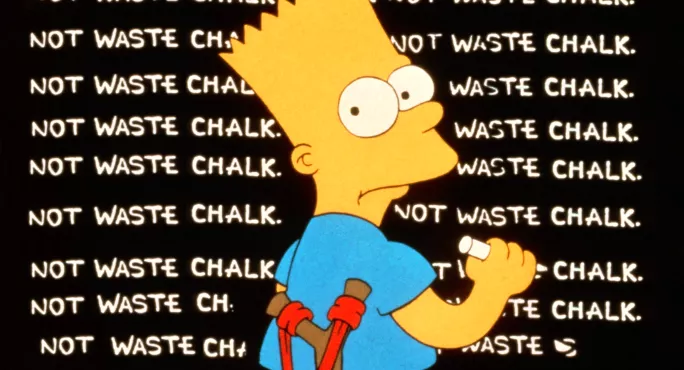- Home
- Why all schools should be ‘warm-strict’ on behaviour
Why all schools should be ‘warm-strict’ on behaviour

Life is full of trade-offs. We can live fast but die young. We have to balance speed, price and quality when buying things. And when it comes to the culture in a school, many would say that it is a compromise about the best possible behaviour, by the maximum number of its pupils, in the most inclusive way.
Some argue that you can have impeccable behaviour by most but only at the cost of some children being excluded, literally or emotionally. A few would say inclusion overrides everything, and schools must flex to allow for the behaviour of the children they teach. And, of course, often the discussion doesn’t even reach this point as there’s no agreement as to what “good” behaviour is or should be.
Fortunately, in life we have breakthroughs that enable previous trade-offs to be minimised or avoided altogether. For instance, new medicines with no side-effects or greater efficacy, or innovations that are quicker, cheaper and better than anything before, like the refrigerator or smartphone.
Right now, we’re seeing the same kind of game-changing development in England’s schools, in the area of culture. A small-but-growing number achieve phenomenal cultures, which are adhered to by nearly all their pupils, and with very few children left behind. The trade-off in these schools is far lower, and they tend to get great outcomes for their pupils, too.
The ‘warm-strict’ approach to behaviour
These schools are all adherents, explicitly or otherwise, of an approach best described as “warm-strict”.
The approach is pretty much like its name suggests. Strict doesn’t mean punitive or harsh, just that it is very clear who is in charge and what the rules are, and that these are consistently applied and reinforced. The warmth is about all of this being done to reassure pupils, with love, and clearly about “purpose not power”. Instead of lowering expectations as to what pupils can do, the school supports them to raise their game, in whatever way is needed.
This way of operating has been quietly spreading for ages, with an acceleration in recent times. That’s not to say that all of these schools look or operate in the same way - they really don’t.
Brenzett Primary in Romney Marsh, Kent, is very different to St Cuthbert’s in Carlisle, as Reach Academy Feltham in West London is to Great Yarmouth Charter Academy, Norfolk. However, the principles are clearly the same, and the kind of cultures created similar: happy kids who come to school more often, do the right thing more quickly, learn more, and do better in so many ways. (The same is true for the staff.)
Why does warm-strict work then? Three things come to mind.
First of all, it refuses to accept the traditional trade-offs around culture, so that it’s not this OR that OR the other, but warm AND strict. They’re seen as two sides of the same coin, and huge amounts of effort goes into ensuring that they are aligned so that they reinforce, not undermine, one another. Schools that adhere to this approach sweat the small stuff, because they think it matters, and they are constantly on the lookout for unintended consequences.
Secondly, and I find this fascinating, these schools are systematising successful policies and techniques, to allow them to be consistently used across the whole school and more easily picked up by new staff. (This also allows them to be transferred and replicated elsewhere - another reason why it is spreading so effectively.)
Thirdly, and perhaps most importantly, it is based on the belief that everyone can get better - and that it’s leadership’s role to ensure this. Warm-strict leaders don’t talk about “good” or “bad” teachers as, unlike in more progressive approaches, they don’t think it’s anything inherent in a colleague or down to the individual to build relationships with kids or ensure good behaviour. They see it as a matter of mindset and training with the right tools, and that it’s their responsibility to provide this, in order to make their team better.
And the same goes for their pupils. They believe that, given the right circumstances - rules, rewards, curriculum, support - every child can achieve incredible things. Poverty or other challenges aren’t barriers that block success but hurdles to be overcome with help, with the ultimate goal of pupils becoming more independent and resilient over time.
It’s still early days for the warm-strict movement, but I’ve been taken aback how things have moved in the past couple of years. Would the country’s kids be better off if all schools adopted a warm-strict approach? I really think so. Indeed, I wouldn’t be surprised if in a decade or so’s time the majority of our schools were, explicitly or otherwise, operating on these principles, with people unable to imagine what life was like before this - in the same way a world without smartphones and the internet seems weird to my daughters in 2019.
Mark Lehain is director of Parents and Teachers for Excellence. He was founding principal of Bedford Free School
Keep reading for just £1 per month
You've reached your limit of free articles this month. Subscribe for £1 per month for three months and get:
- Unlimited access to all Tes magazine content
- Exclusive subscriber-only stories
- Award-winning email newsletters

